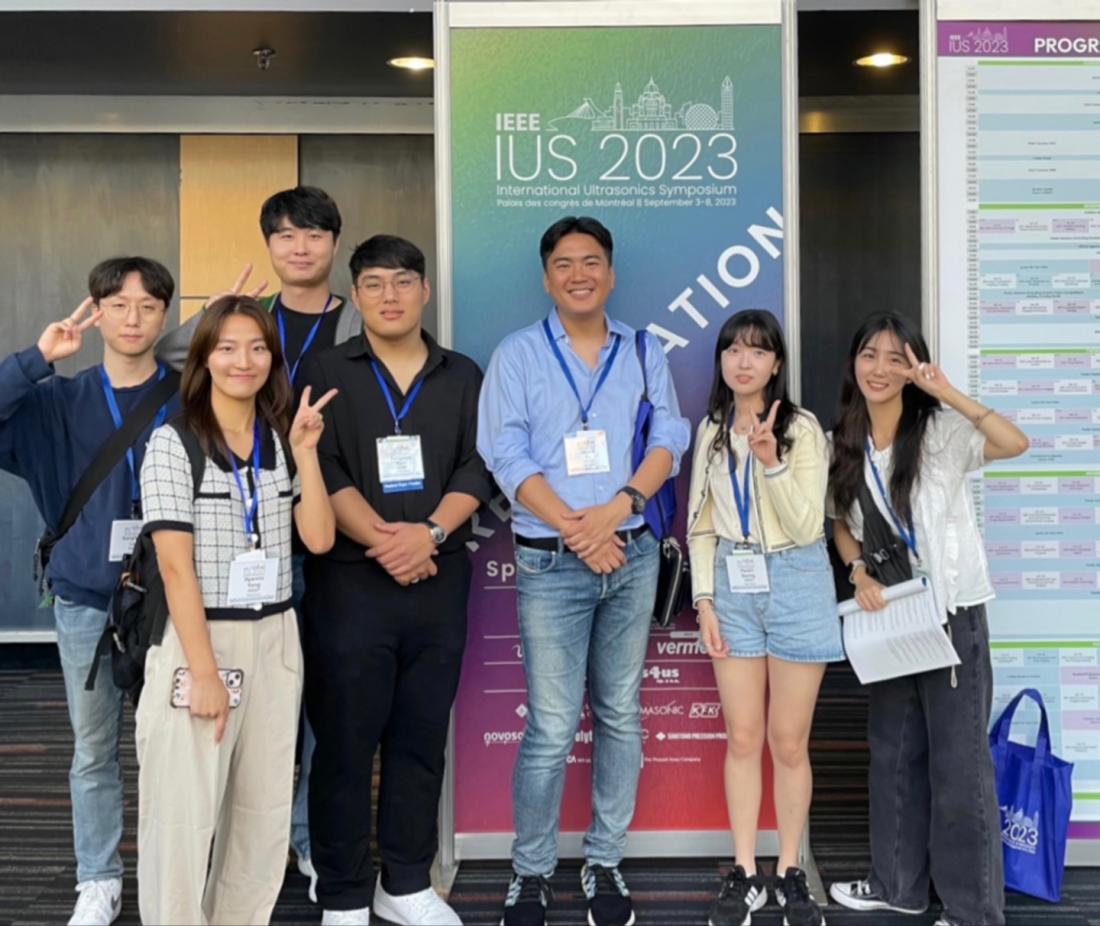□ On Wednesday October 11, it was announced that a research team (Professor Jae-sok Yu of the Department of Robotics and Mechatronics Engineering in the role of advisor and PhD student Dong-gyu Jeong) comprising junior undergraduate students (Hye-min Yang and Kyung-eun Lee) at the Daegu Gyeongbuk Institute of Science and Technology (DGIST; President Young Kuk) gave a presentation at the Institute of Electrical and Electronics Engineers (IEEE) International Ultrasonic Symposium, the world's largest conference in electrical and electronic engineering.
□ As an exercise in self-supervised learning, the research team successfully developed a deep learning model-based technology that efficiently removes noise from photoacoustic microscopes.
□ Photoacoustic microscopy is a technique that detects photoacoustic signals generated by tissues irradiated with a short laser to observe the optical properties of deep tissues in high resolution. However, the high-speed laser used for scanning has low energy, which leads to small photoacoustic signals and electrical noise, limiting image quality.
□ Deep learning models have great potential as a technique to effectively remove complex noise. With many medical imaging systems, however, it is difficult to obtain noise-free reference images, and thus, properly implementing deep learning has been difficult.
□ Hence, as an exercise in self-supervised learning, a research team of DGIST undergraduate students proposed a deep learning model that can effectively remove noise from noisy images. To validate the proposed model’s clinical efficiency, they captured images of rats’ ears with the help of Professor Chang-ho Lee of the Department of Nuclear Medicine at Chonnam National University Hwasun Hospital. The results confirmed that the deep learning model effectively removed noise in real-world clinical data.
□ The research was conducted as part of the Undergraduate Group Research Program (UGRP). The UGRP is a regular curriculum at DGIST, in which undergraduate students complete a research project independently, demonstrating self-direction.
□ First author and DGIST undergraduate student Hye-min Yang said, "Thanks to support from the UGRP and our advisor, we were able to design and conduct an experiment and give a presentation at an international conference. The UGRP taught us not only how to plan and conduct research but also how to develop the basic qualities researchers need."
□ Professor Sang-hyun Park of the Department of Robotics and Mechatronics Engineering, who took charge of research advising under the UGRP, said, "By independently designing, conducting, and concluding research and then writing a research article, these undergraduate students have made an extraordinary achievement. This experience will be a great asset in their future research activities."
□ The research was funded by the National Research Foundation of Korea’s Outstanding New Research Project.



